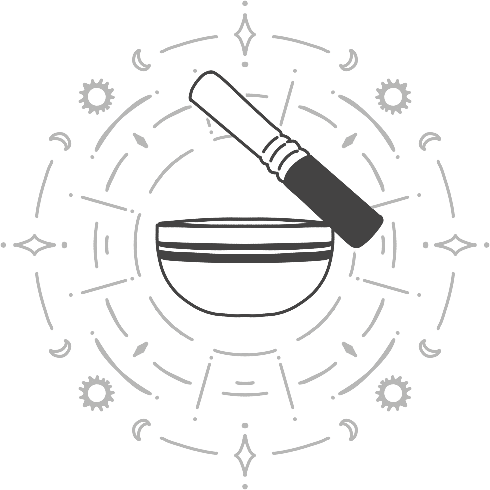What Is Nada Yoga?

Resonance and Sacred Sound
One of the guiding principles of Nada Yoga is resonance. It’s the idea that vibrations within and around us can influence each other, amplifying energy and effect. Just as a vibrating tuning fork can activate another tuning fork of the same pitch, sound has the power to awaken similar vibrations within us.
We write in Seasons of Sound:
We write in Seasons of Sound:
Nada Yoga and Modern Sound Healing
Contemporary sound healing—what we now often call “sound baths”—draws heavily from the principles of Nada Yoga, whether consciously or not. When we use crystal bowls, gongs, or chimes to create meditative soundscapes, we’re participating in a lineage of practice that spans thousands of years.
Modern sound tools are designed with accessibility in mind. You don’t need a music background to begin exploring this work, but intention and training matter. In Nada Yoga, the practice is never just about creating sound—it’s about cultivating presence, aligning with sacred vibration, and holding space with care.
In Seasons of Sound, we reflect on this balance between simplicity and intentionality:
Modern sound tools are designed with accessibility in mind. You don’t need a music background to begin exploring this work, but intention and training matter. In Nada Yoga, the practice is never just about creating sound—it’s about cultivating presence, aligning with sacred vibration, and holding space with care.
In Seasons of Sound, we reflect on this balance between simplicity and intentionality:
A Global History of Sound as Medicine
Nada Yoga is one expression of the deep, global human connection to healing through sound. Across continents and cultures, sound has always been central to spiritual practice, ritual, and community.
In Seasons of Sound, we write about these ancient cross-cultural practices:
In Seasons of Sound, we write about these ancient cross-cultural practices:
Bringing Nada Yoga Into Your Own Practice
You don’t need to live in an ashram to begin exploring Nada Yoga.
In fact, if you’ve ever:
In fact, if you’ve ever:
- Sat quietly and listened to the wind or water
- Chanted Om or hummed during meditation
- Played a singing bowl with care and presence ...you’re already participating in the spirit of this practice.

